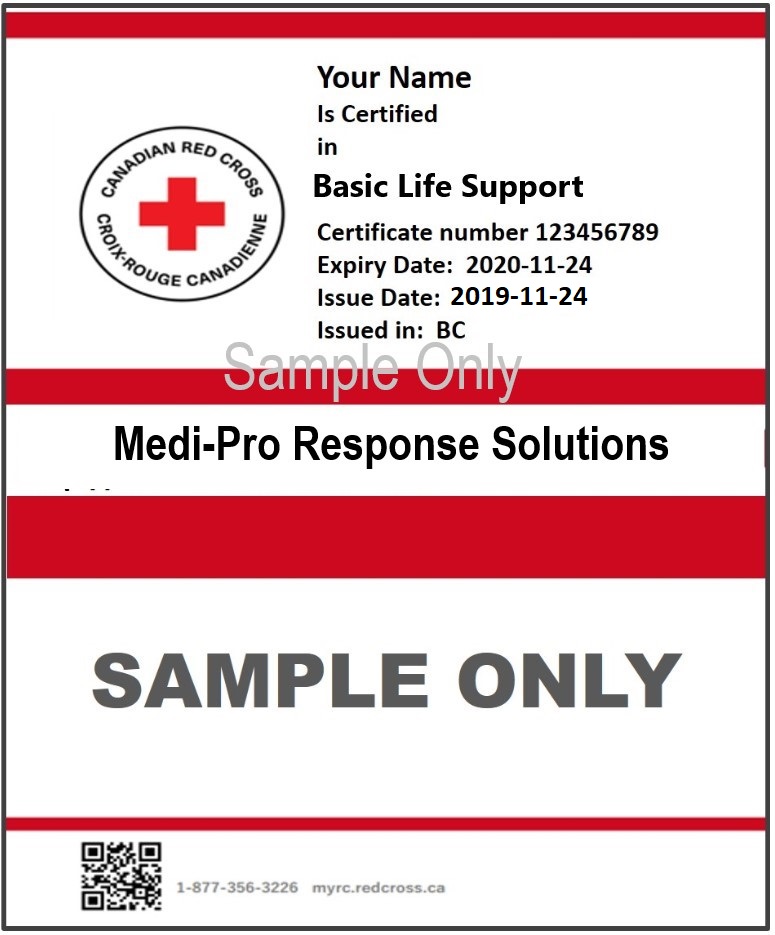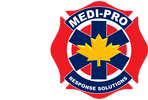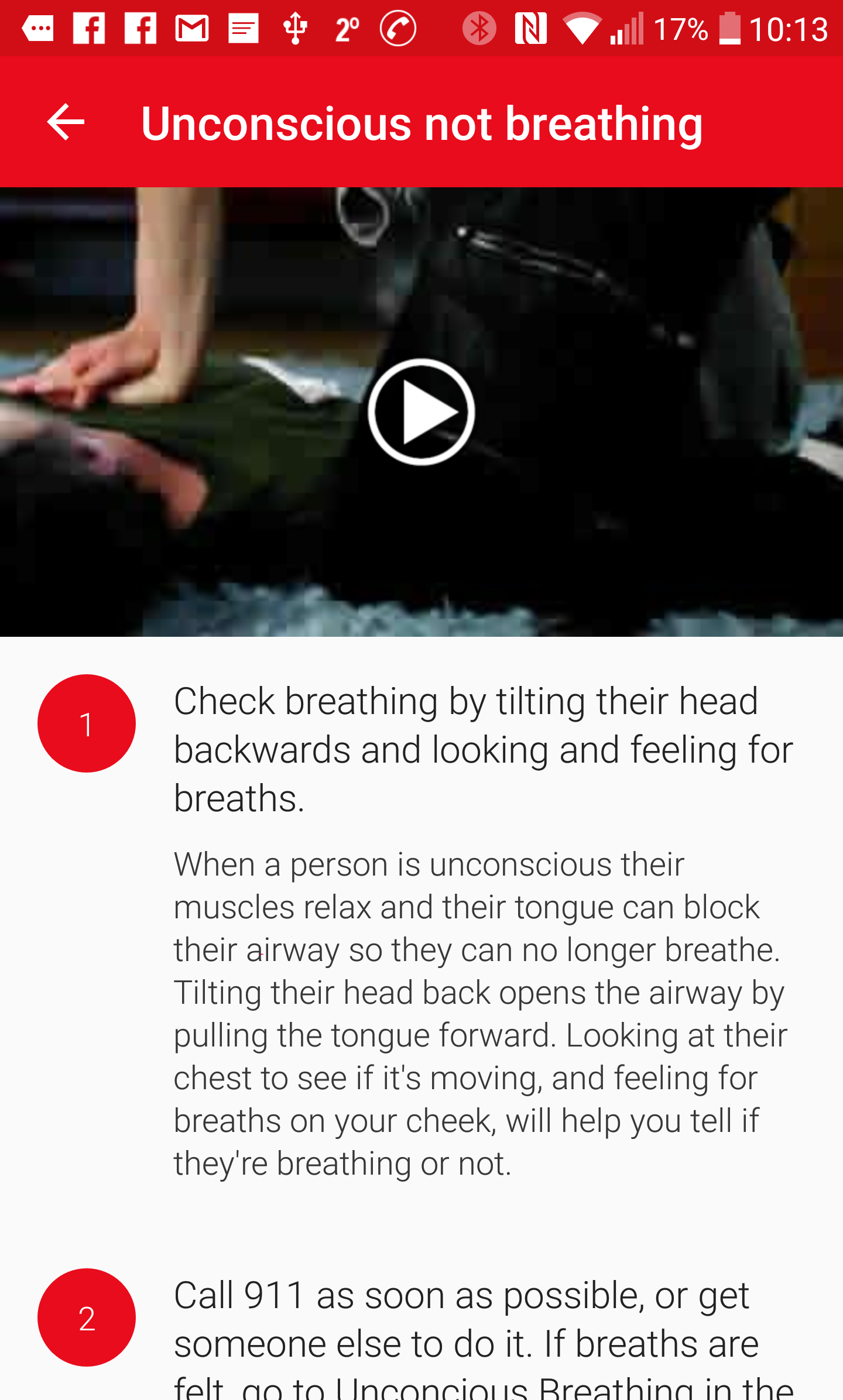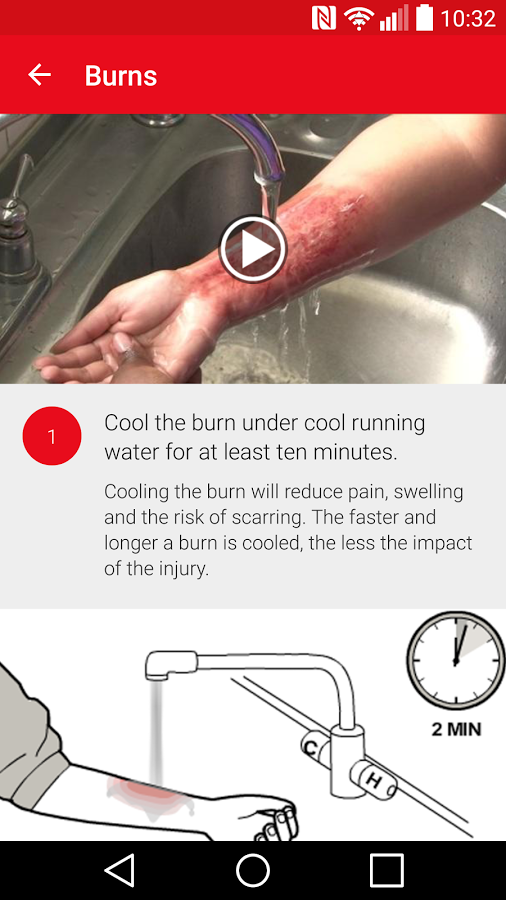Canadian Red Cross
Basic Life Support Recertification
|
Course Price |
$75 |
|
Course Duration |
5 hrs |
| CPR & AED | High-Performance team CPR |
| O2 Therapy | Oxygen Administration included |
.png)
Basic Life Support Recertification Course Details
| Table of Contents |
| Registration |
| Overview |
| Resources |
| Preparation |
| Skills |
Our Canadian Red Cross Basic Life Support Recertification Course is an interactive and learner centered 5 hour certification program which includes training in a high-performance "pit crew" style approach to CPR & AED, for emergency health professionals working in a co-ordinated team response environment.
- Basic Life Support certificate (valid for 1 year).
- CPR-AED skills for Adult, Child, Infant and Neonatal patients
- Multi-Rescuer dynamic CPR performance
- Variable Compression to Ventilation Ratios
- Airway Management Certificate (valid for 3 years)
- Oxygen Therapy certificate (valid for 3 years)
- Nationally recognized for credibility and up to date evidence-based protocols
You will learn how to systematically approach and manage a wide variety of cardiac and respiratory arrest emergencies including team-based Cardiopulmonary Resuscitation (CPR), Automated External Defibrillation (AED), and choking response for patients in different age categories.
Basic Life Support (BLS) has replaced CPR level HCP as the paramedical industry standard for professional CPR training and performace.
Learn more about our Canadian Red Cross Basic Life Support Recertification Courses below...
Basic Life Support Recertification Course Overview
Review the information in this section to make sure that Basic Life Support will meet your training and certification needs, and give yourself the tools to arrive fully prepared for success and enjoyment in your BLS course.
.png)
Most of our Kelowna Basic Life Support Recertification Courses are conducted at 2011 Daimler Drive, the Westside Alliance Church & Community Center. By request, we can schedule private BLS courses for your group at another location of your choosing.
Click here for directions, maps and public transit options.
What to bring
Canadian Red Cross BLS Certification

Canadian Red Cross Basic Life Support programs are Nationally recognized for up to date protocols, and follow the most current ILCOR and CoSTR CPR performance recommendations.
You'll learn and practice professional and efficient, team-based CPR & AED skills which will help you make safe decisions in any emergency, and provide immediate medical assistance to someone who is in respiratory or cardiac arrest.
Upon completion of your Basic Life Support (BLS) course, you will receive 3 separate Canadian Red Cross Certificates...
- Basic Life Support (valid for 1 year)
- Oxygen Therapy (valid for 3 years)
- Airway Management (valid for 3 years)
More than just a certificate, you'll have the confidence to act, and Be the Difference in your community.
Who should take Basic Life Support
.jpg)
- ER Nurses
- Remote First Aid Attendants
- Medics
- Fire Fighters
- Paramedics
- Professional Medical Responders
- All members of team-based emergency medical response units
Note:
You should always confirm specific course and certification requirements with your employer, educational institution or governing body before making your course selection. Medi-Pro First Aid can provide you with best practice recommendations based on industry standards, but cannot make a blanket guarantee that any particular First Aid course will meet your individual requirements.
Basic Life Support Manuals and Resources
Canadian Red Cross Basic Life Support Field Guide
The Canadian Red Cross Basic Life Support Field Guide is a pocket-sized, spiral bound 52 page, full-color text book with a soft red and white cover. The BLS Field Guide is available as a downloadable PDF, and in printed edition for BLS course students.
A printed copy of the BLS Field Guide can be purchased, or downloaded as a free PDF by anyone with an interest in the most current and scientifically valid high-performance team CPR practices in Canada.
BLS Field Guide Table of Contents:
Basic Life Support Terminology
Part 1. Introduction to Basic Life Support
- Legal Issues
Part 2. Basic Life Support Skills
- Glove Removal
- Primary Assessment
- CPR
- Airway Obstruction
- Assisted Ventilation
- Anatomical Terminology
- Opening the Mouth
- Airway Adjuncts
- Suction
- Pulse Oximetry
- Supplemental Oxygen
- Special Considerations
- Trauma
- Hypothermia
- Opioid Overdose
- Anaphylaxis
- Six Rights of Medication
- High-Performance CPR
- Post-Cardiac Arrest Care
- High-Performance Team Communication
- Post-Event Debrief
Emergency Care for Professional Responders
The Canadian Red Cross Emergency Care for Professional Responders reference manual is a 453 page, full-color text book with a soft red and white cover. The Emergency Care for Professional Responders reference manual is available to purchase in a printed format, and free to download as a PDF file.
Emergency Care Manual Contents:
- Professional Responder Training Levels
- Preceptorship
- Medical Oversight
- Communicating with the Medical Director
- Professional Responder Responsibilities
- Interpersonal Communication
- Self-Care
- Critical Incident Stress and Post-Traumatic Stress Disorder
- Legal and Ethical Issues
- Duty to Act
- Scope of Practice
- Abuse and Neglect
- Consent
- Refusal of Care
- Transfer of Care
- Documentation
- Communication
- Medical Terminology
- Preparing for the Emergency
- Response
- Equipment
- Plan of Action
- Communications
- Training
- Psychological Preparation
- Managing Hazards at the Emergency Scene
- Personal Safety
- Safety of Others
- Special Emergency Scenes
- Specific Scene Hazards
3. Infection Prevention and Control
- How Infections Occur
- Disease-Causing Pathogens
- How Diseases are Transmitted
- Epidemics and Pandemics
- Diseases that Cause Concern
- Immunization
- Preventing Disease Transmission
- Personal Hygeine
- Personal Protective Equipment (PPE)
- Engineering and Work Practice Controls
- Cleaning and Disinfecting Equipment
- Spill Management
- Exposure Control Plans
- If an Exposure Occurs
- Anatomical Terminology
- Body Cavities
- Body Systems
- The Cell
- Respiratory System
- Circulatory System
- Lymphatic System
- Immunological System
- Nervous System
- Musculoskeletal System
- Integumentary System
- Endocrine System
- Digestive System
- Genitourinary System
- Interrelationships of Body Systems
- How Injuries Occur
- Scene Assessment
- Primary Assessment
- Reassessment
- Secondary Assessment
- Treatment/Interventions
- Documentation of Findings
- Ongoing Assessment
6. Airway Management and Respiratory Emergencies
- Respiratory Pathophysiology
- Airway Obstruction
- Respiratory Conditions
- Assisted Ventilation
- Resuscitation Devices
- Resuscitation Masks
- Bag-Valve-Mask (BVM) Rescusitators
- Supplemental Oxygen
- Airway Adjuncts
- Oropharyngeal Airways
- Nasopharyngeal Airways
- Supraglottic Airways
- Suction
- Care for Respiratory Distress
- Care for Respiratory Arrest
- Cardiovascular Disease
- Angina
- Myocardial Infarction (MI)
- Congestive Heart Failure
- Cardiac Arrest
- Cardiopulmonary Resuscitation
- Compressions
- Team Approach
- Using a Defibrillator
- Special Resusciation Situations
- Post-Cardiac Arrest Care
- Cerbrovascular Accident (Stroke)
- Transient Ischemic Attack (TIA)
- CVA Assessment Scales
- Pathophysiology of Shock
- Types of Shock
- Stages of Shock
- Care for Shock
9. Hemorrhage and Soft Tissue Trauma
- Infection
- Dressings and Bandages
- Stitches and Sutures
- Tourniquets
- External Bleeding
- Internal Bleeding
- Open Wounds
- Closed Wounds
- Burns
- Major Soft Tissue Trauma
- Types of Musculoskeletal Injuries
- Splints
- Slings
- Signs and Symptoms of Musculoskeletal Injuries
- Upper Extremity Injuries
- Lower Extremity Injuries
11. Chest, Abdominal and Pelvic Injuries
- Chest Injuries
- Rib Fractures
- Hemothorax
- Pneumothorax
- Subcutaneous Emphysema (SCE)
- Penetrating Chest Injuries
- Abdominal Injuries
- Evisceration
- Abdominal Aortic Aneurysm (AAA)
- Pelvic Injuries
- Pelvic Binding
- Genital Injuries
- Mechanism of Injury for Head and Spinal Injuries
- Head Injuries
- Skull Fractures
- Objects Impaled in the Skull
- Injuries to the Brain
- Cerebral Hematoma
- Spinal Injuries
- Spinal Motion Restriction (SMR)
- Care for Serious Head and Spinal Injuries
- Rapid Extrication
- Removing Helmets and Other Equipment
13. Acute and Chronic Illnesses
- Altered Mental Status
- Syncope
- Diabetic Emergencies
- Seizures
- Types of Seizures
- Epilepsy
- Peritonitis
- Appendicitis
- Bowel Obstruction
- Gastroenteritis
- Kidney Stones
- Peptic Ulcers
- Gastrointestinal Bleeding (GI)
- Urinary Tract Infection (UTI)
- Poison Control Centres
- Recognizing Poisoning
- General Care for Poisoning Emergencies
- Ingested Poisons
- Inhaled Poisons
- Absorbed Poisons
- Injected Poisons
- Substance Misuse and Abuse
- Crowd Management Agents
- Temperature Homeostasis
- Heat-Related Illness
- Heat Cramps
- Heat Exhaustion
- Heat Stroke
- Cold-Related Illness
- Hypothermia
- Frost Nip
- Frostbite
- Drowning
- Cold-Water Immersion and Drowning
- High-Altitude Illness
- SCUBA-Related Illness
- Physiology
- Barotrauma of Descent
- Barotrauma of Ascent
16. Pregnancy, Labour, and Delivery
- Pregnancy
- The Birth Process
- Assessing Labour
- The Labour Process
- Preparing for Delivery
- Assisting with Delivery
- Caring for the Neonate and Mother
- Care and Assessment for the Neonate
- Caring for the Mother
- Midwives and Home Births
- Complications during Pregnancy
- Spontaneous Abortion
- Premature Labour
- Ectopic Pregnancy
- Third Trimester Bleeding
- Complications During Childbirth
- Prolapsed Cord
- Breech Birth
- Limb Presentation
- Multiple Births
- Pediatric Patients
- Stages of Development
- Anatomical and Physiological Differences
- Assessing the Pediatric Patient
- Other Pediatric Conditions
- Geriatric Patients
- Dementia and Alzheimer's Disease
- Osteoporosis
- Bariatric Patients
- Palliative Patients
- Patients with Disabilities
- Psychological Crisis
- Suicide
- Assault
- Death and Dying
- Mental Health Crises
- Anxiety
- Depression
- Psychosis
19. Reaching, Lifting, and Extricating Patients
- Gaining Entry to Buildings
- Motor Vehicles
- Stabilizing Vehicles
- Accessing the Patient
- Moving Patients
- Body Mechanics
- Stretchers and Lifting Devices
- Lifting and Moving a Stretcher
- Bariatric Patients
- Emergency Vehicle Maintenance and Safety Check
- Removing a Vehicle from Service
- Beginning and Ending a Shift
- Safe Vehicle Operation
- Air Medical Transportation
- Patient Considerations
- Landing Site Preparation
- Ground Safety Precautions
- Medical Evacuation from a Ship
- Preparing the Patient for Transfer
21. Multiple Casualty Incidents
- Organizing Resources
- Caring for the Ill or Injured
- Triage
- CBRNE Emergencies
- Types of Agents
- Methods of Dissemination
- Scene Assessment
- Establishing Perimeters
- Triage in a CBRNE Incident
- Control of Contaminated Casualties
- Transporting CBRNE Patients
- Psychological Impact of CBRNE Events
- Assisting with Medication vs Administering
- Six Rights of Medication
- Pharmacological Terminology
- Routes of Drug Administration
- Pharmacokinetics
- Pharmacodynamics
- Intravenous (IV) Therapy Maintenance
- Preparing a Drip Set and Solution
- Calculating IV Flow Rates
- Changing an IV Bag
- Complications
- Discontinuing an IV Bag
- How to Administer Medication Intranasally
- Guidelines for Injections
- Disinfection
- Maritime Occupational Health and Safety Regulations (MOHS)
- Sterilization Techniques
- Managing Dangers at the Scene
- Toxicological Hazards on Board a Ship
- Psychological Well-Being of Seafarers
- Medical Care of Rescued Persons
- Radio Medical Advice
- Transfer and Transport
- Marine Pharmacology
- Medications and Health Supplies Carried on Board
- Drugs Requiring Medical Advice
- Roles and Responsibilities of the Advanced First Aid Attendant
- Responsibilities of the Employer and Other Employees
- Return-to-Work Protocol
- Workplace First Aid Equipment
- Workplace First Aid Transportation
- Regulations and Documentation
- Workplace Occupational Health and Safety Regulations
- Workplace Hazardous Materials Information System
- Documentation
- Typical Workplace Injuries
- Workplace Injuries
- Appendix A: Abbreviations for Documentation
- Appendix B: Sample Ambulance Equipment List
- Appendix C: The Phonetic Alphabet
- Appendix D: Medical Terminology
Canadian Red Cross First Aid App
.png)
The Canadian Red Cross First Aid App allows you to keep lifesaving procedures and advice literally in the palm of your hands. Turn your Apple or Android smart phone, tablet, or mobile device into an extensive and instantaneous resource for the emergencies you encounter. The First Aid App helps you maintain and hone your First Aid skills on a day to day basis, and provides you with the extra details that can make a huge difference when seconds count.
Free to download, easy to use, essential to have. Download the App to get on the go access to First Aid videos, images, interactive quizzes, and step-by-step First Aid procedures.
Key features of the Canadian Red Cross First Aid App:
.jpg)
Your learning and enjoyment in your Canadian Red Cross Basic Life Support Recertification Course, as well as your confidence and competence in a real emergency, are enhanced by your course materials and the supplemental resources you keep available. You can access, download and utilize these resources before your course, during your course and most importantly after your Basic Life Suppport course to review and verify the simple First Aid & CPR skills you'll learn.
.jpg)
Once you've completed your BLS course, you may want to update, replace or supplement your First Aid kits. Medi-Pro First Aid offers a variety of First Aid Kits to meet your needs at work, at home, or for personal use.
No single First Aid kit will universally meet all your needs, especially if the one you need isn't readily accessible wherever you happen to be. You might need a Level 1 First Aid kit at your workplace to meet WorkSafe BC's requirements, and a Basic First Aid Kit at home for your family emergencies. A smaller, more portable Personal First Aid Kit might be ideal to keep in your vehicle glovebox, golf bag, backpack or bicycle.
You will also have the chance to look at and purchase a selection of First Aid kits in the classroom during your BLS course.
Kelowna Basic Life Support Recertification Course Preparation
You will enjoy your Canadian Red Cross Basic Life Support Recertification Course in Kelowna and Vancouver, BC much more if you take a few minutes to review some basic expectations and arrived fully prepared to get the most out of your training.
BLS Certification Requirements
.jpg)
- Attendance in 100% of the course
(this includes arriving, and returning from all breaks, on time) - Minimum 80% on a multiple choice written knowledge evaluation
(if needed, multiple attempts and reasonable accommodation are permitted) - Active participation in all activities, skills, and scenarios
- Respectful behaviour towards the Instructor all other participants
- Legible, accurate submission of your First & Last name and your preferred email address
(this is required for Medi-Pro to process your Certification through the Canadian Red Cross)
Personal Items to bring to your BLS Course
.jpg)
- Clean indoor footwear
- Reusable mug
- Refillable water bottle
- Food for meals and snacks through the duration of the course
(a small fridge and microwave are provided) - Clothing which allows for modesty and comfort during physical activity
- Spare shirt and sweater in case of temperature changes or excessive sweating
- Medications that you might need throughout the day
- Glasses or contact lenses if required for reading
- Pen and notepad
- Kneepads if required
- Lightly scented deodorant
.jpg)
- There will be a 15 minute break approximately every 2 hours
- Coffee, tea and water are provided for your refillable mug and water bottle
- There will be one 30-minute Lunch break every day
(a small fridge and microwave are provided) - Access to local stores and restaurants may be limited
- Use of electronics is discouraged except during breaks and when the Instructor deems it specifically appropriate
- Smoking is prohibited to designated times and areas
(this includes vaporization products) - Consumption of alcohol in the classroom and grounds is prohibited
.jpg)
Participating in your Canadian Red Cross Basic Life Support Recertification Course in Kelowna and Vancouver, BC will involve working in close proximity with your classmates. Respectful physical contact is an unavoidable component of hands-on BLS training. Out of consideration for your classmates, please arrive with hygeine, modesty and the comfort of others in mind.
- Hygeine and beauty products should be unscented or lightly-scented only
- Jewellery or accessories that could cause injury or entaglement may need to be removed
(please do not bring expensive jewellery or irreplaceable heirlooms) - Longer hair needs to be secured in a way that prevents it from getting into others mouths and eyes
- Your clothing should allow you to participate with comfort and modesty
- Slogans or images that might be considered controversial, disrespectful or confrontational should be avoided
- Some types of clothing may restrict your ability to participate or compromise your classmates' comfort.
- Although it is impossible to define every aspect of the term "inappropriate" ahead of time, we ask that you take this into consideration when making your choices
.jpg)
Participating in your Canadian Red Cross Basic Life Support Recertification Course in Kelowna and Vancouver, BC will involve significant physical activity. If you have medical conditions, physical injuries or limitations that might compromise your ability to safely participate in these physical activities, you must notify your Instructor at the start of your course. Your Canadian Red Cross certified BLS Instructor will make reasonable efforts to adapt and accomodate your limitations, but it is your responsibility to decide whether or not you can safely complete any particular task.
Physical activities typical of Canadian Red Cross BLS courses include...
- Kneeling on the ground
- Laying face-down on the ground
- Laying face-up on the ground
- Walking up and down stairs
- Rolling and lifting an adult sized classmate
- Performing CPR chest compressions on a CPR mannequin
- Using a pocket mask with a one-way valve to inflate the lungs of a CPR mannequin
- Sitting for 15-30 minutes at at time
- Standing for 15-30 minutes at a time
- Tying simple knots
- Tearing medical tape
Social Interaction in BLS Courses
.jpg)
As a participant in a Canadian Red Cross Basic Life Support Recertification Course, you will need to work with and show respectful behaviour towards all of your classmates. Regardless of any personal, philosophical, religious or political differences, you must support each other's learning throughout the course.
Each participant will bring their own unique experiences, backgrounds and perspectives to your BLS course, which will make the course more interesting and relevant for everyone, provided mutual respect is consistently demonstrated.
Respect is particularly important when learning, practicing or performing skills that involove physical contact with another participant. Physical contact is an unavoidable component of many core First Aid and CPR skills, so participants must be as respectful and professional as possible during these segments.
You are not required to agree with every aspect of your classmates' lifestyles and opinions, however you are expected to demonstrate respectful behaviour towards each other at all times.
Basic Life Support Skills & Principles
Your Canadian Red Cross Basic Life Support Recertification Course in Kelowna and Vancouver, BC will give you the skills and knowledge you'll need to make safe and effective decisions in a medical emergency, as part of a professional response team.
A strong emphasis on developing a safety first attitude will help you anticipate and prevent many common injuries before they even occur.
BLS Course Topics & Skills
.jpg)
Responding to emergencies as part of a coordinated team, following a logical and consistent decision making process is the underlying foundation of your Basic Life Support training. Rather than being forced to memorize a rigid and outdated list of "rules" you'll practice a simple yet flexible approach to making sound decisions and taking sensible action that gives you confidence in any situation, regardless of the nature and extent of the injuries.
You'll have the skills and confidence to Be the Difference on your team and in your community.
- How to use a Bag-Valve-Mask (BVM)
- How to use an Oropharyngeal Airway (OPA)
- How to use a Nasopharyngeal Airway (NPA)
- How to use a Manual Suction device
- How to use an Oxygen Cylinder
- How to use an Oxygen Regulator
- How to use an Oxygen Mask
- How to use a Non-Rebreather Mask
- How to use a Nasal Canula
- How to use a Pulse Oximeter
- Primary Survey
- Assessing Level of Responsiveness
- Airway Assessment
- Head-Tilt-Chin-Lift
- Jaw Thrust
- Breathing Assessment
- Circulation Assessment
- Radial Pulse Checks
- Brachial Pulse Checks
- Carotid Pulse Checks
- Measuring Oxygen Saturation (SpO2)
- Recovery Position
- Cardiopulmonary Rescuscitation (CPR)
- Automated External Defibrillation (AED)
- Performing CPR as part of a team
- Team CPR & AED for Adults
- Team CPR & AED for Children
- Team CPR & AED for Infants
- Team CPR & AED for Neonates
- Special Considerations for CPR
- Rescue Breathing during CPR
- How to use a Bag-Valve-Mask
- BVM to Stoma Rescuscitation
- Compressions-Only CPR
- Hands-Only CPR
- When to stop CPR
- Return of Spontaneous Circulation (ROSC)
- Obvious Signs of Life
- Air in stomach during CPR
- Patient vomiting during CPR
- Special Circumstances for AED
- Using an AED on metal surfaces
- Using an AED near wet surfaces
- Using an AED with a Pacemaker
- Using an AED with excessive body hair
- Using an AED with Medical Patches
- Airway Anatomy
- Mild Choking
- Severe Choking
- Severe choking procedures for responsive Adults
- Severe choking procedures for responsive Children
- Severe choking procedures for responsive Infants
- Severe choking procedures for responsive Neonates
- Modifications to choking procedures
- Respiratory Arrest
- Adult CPR with an Airway Obstruction
- Child CPR with an Airway Obstruction
- Baby CPR with an Airway Obstruction
- Neonatal CPR with an Airway Obstruction
- Assisted Ventilations
- Team-based Assisted Ventilations for an Adult or Child
- Team-based Assisted Ventilations for an Infant or Neonate

.png)
.png)
.jpg)
.jpg)





.jpg)
.jpg)